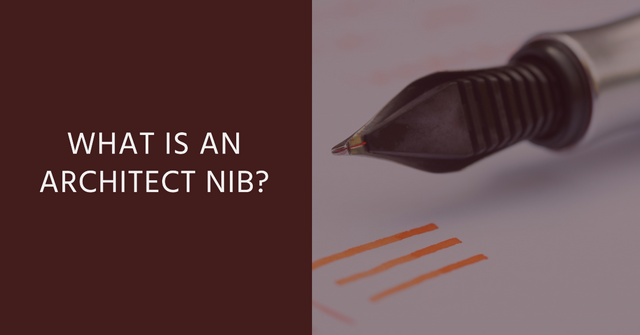Key Takeaways
- A flex nib is a type of fountain pen nib that allows for line variation based on pressure.
- Flex nibs have a rich history and can be made from various materials.
- Understanding the mechanism of a flex nib helps control line width and ink flow.
- Benefits of using a flex nib include line variation and artistic expression.
- Using a flex nib requires proper pressure control, writing speed, and ink flow management.
- Flex nibs are different from other nibs like italic, fude, and regular nibs.
- Choosing a flex nib depends on your writing needs and preferences.
Introduction to Fountain Pen Flex Nibs
The world of writing instruments is vast and varied, with each type of pen offering a unique writing experience.
One such instrument that stands out for its distinctive characteristics is the fountain pen with a flex nib.
A flex nib, also known as a flexible nib, is a type of fountain pen nib that is known for its ability to create different line widths.
This is made possible due to its non-rigid structure, which allows a writer to control line width by adjusting the pressure of the pen on paper.
Definition of a Flex Nib
A flex nib is a type of fountain pen nib that is flexible enough to create line variation in writing.
The nib spreads apart under pressure, allowing more ink to flow and creating a wider line.
When the pressure is released, the nib returns to its original position, producing a thinner line.
This ability to vary line width gives the writing a distinctive, expressive character that is highly valued by many writers and calligraphers.
Brief History and Evolution of Flex Nibs
Flex nibs have a rich history that dates back to the era of dip pens.
They were initially made from gold due to the metal's flexibility.
However, with advancements in technology and materials, modern flex nibs are now also made from steel and other alloys.
Despite these changes, the fundamental principle of a flex nib — its ability to vary line width with pressure — remains the same.
In the next sections, we will delve deeper into the workings of a flex nib, its benefits, and how to use it effectively.
How Does a Flex Nib Work?
Understanding the mechanism of a flex nib is key to appreciating its unique capabilities and learning how to use it effectively.
The operation of a flex nib is a fascinating blend of physics and art, offering a writing experience that is both tactile and visually appealing.
The Mechanism of a Flex Nib
At its core, a flex nib operates on a simple principle: the application and release of pressure.
When you apply pressure on the nib while writing, the tines of the nib spread apart.
This action increases the flow of ink, resulting in a wider line.
Conversely, when you release the pressure, the tines return to their original position, reducing the ink flow and creating a thinner line.
This ability to vary line width through pressure is what gives flex nib writing its distinctive character.
Flex Nibs and Ink Flow
An important aspect of a flex nib's operation is its ink flow.
The design of a flex nib, with its split tines, allows for a greater volume of ink to flow when the tines are spread apart.
This ensures a consistent and smooth writing experience, even when producing wider lines.
In the next section, we will explore the benefits of using a flex nib and how it can enhance your writing experience.
Benefits of Using a Flex Nib
The flex nib is more than just a writing tool; it's a medium for self-expression.
The unique characteristics of a flex nib offer several benefits that can enhance your writing experience and add a touch of flair to your written work.
Line Variation and Aesthetics
One of the primary benefits of using a flex nib is the line variation it offers.
The ability to create different line widths adds a dynamic and expressive quality to your writing.
This can make even everyday handwriting look more interesting and artistic.
- Expressive Writing: The line variation provided by a flex nib allows for expressive writing. You can emphasize certain words or phrases by applying more pressure to create thicker lines, or you can use lighter pressure for a more delicate, thin line. This gives you control over the visual impact of your writing.
- Artistic Flair: The line variation also adds an artistic flair to your writing, making it more visually appealing. This is particularly beneficial for calligraphy and artistic writing, where the aesthetics of the writing are as important as the words themselves.
Flex Nibs and Calligraphy
Calligraphy is a form of artistic writing that benefits greatly from the use of a flex nib.
The line variation that a flex nib provides is ideal for creating the thick and thin strokes that are characteristic of many calligraphy styles.
- Calligraphic Styles: Many calligraphic styles, such as Copperplate and Spencerian, rely on line variation for their distinctive look. A flex nib allows you to create these styles with a single pen, rather than needing separate pens or nibs for different line widths.
- Creative Expression: Beyond traditional calligraphy, a flex nib also offers opportunities for creative expression. You can experiment with different levels of pressure, angles, and writing speeds to create unique effects and styles.
In the next section, we will provide some practical tips on how to use a flex nib fountain pen effectively.
How to Use a Flex Nib Fountain Pen
Mastering the flex nib fountain pen requires understanding its unique characteristics and practicing the right techniques.
Here are some basic guidelines to help you get started and make the most of your flex nib experience.
Basic Techniques for Writing with a Flex Nib
Writing with a flex nib is different from writing with a regular pen.
It requires a certain level of control and finesse to achieve the desired line variation.
- Pressure Control: The key to using a flex nib is learning how to control the pressure you apply while writing. More pressure will spread the tines of the nib and create a wider line, while less pressure will keep the tines closer together for a thinner line.
- Writing Speed: Flex nibs often require a slower writing speed than regular pens. This allows the ink to flow properly and gives you more control over the line variation.
- Ink Flow: Pay attention to the ink flow while writing. If the ink is not flowing properly, you may need to adjust your pressure or refill the ink.
Tips for Controlling Pressure and Line Width
Controlling the pressure and line width is crucial for effective use of a flex nib. Here are some tips to help you improve your control:
- Practice: Practice is key to mastering the flex nib. Start with simple strokes and gradually move on to more complex shapes and letters.
- Consistency: Try to maintain a consistent pressure while writing. This will help you achieve a consistent line width and improve the overall appearance of your writing.
- Rest: Remember to give your hand and the pen a rest. Using a flex nib can be more tiring than a regular pen, and the nib itself may need time to recover its shape.
In the next section, we will compare flex nibs with other types of nibs and discuss when one might be preferred over the other.
Comparing Flex Nibs with Other Nibs
While flex nibs offer a unique writing experience, they are just one type of nib available for fountain pens.
Understanding the differences between flex nibs and other types of nibs can help you choose the right tool for your writing needs.
Differences Between Flex Nibs and Other Types of Nibs
There are several types of nibs available for fountain pens, each with its own characteristics and uses.
Here are some key differences between flex nibs and other common types of nibs:
- Italic Nibs: Unlike flex nibs, which vary line width based on pressure, italic nibs have a flat tip and create line variation based on the angle of the pen to the paper. They are often used for calligraphy and decorative writing.
- Fude Nibs: Fude nibs have a bent tip, which allows for line variation based on the angle of the pen to the paper. They are popular for Asian calligraphy and drawing.
- Regular Nibs: Regular nibs, also known as round or ball-tipped nibs, do not offer line variation. They provide a consistent line width and are often used for everyday writing.
When to Use a Flex Nib Over Other Nibs
Choosing between a flex nib and another type of nib often depends on your writing needs and preferences:
- Calligraphy and Artistic Writing: If you're interested in calligraphy or artistic writing, a flex nib or an italic nib might be the best choice. Both offer line variation, but in different ways. A flex nib varies line width based on pressure, while an italic nib varies line width based on the angle of the pen.
- Everyday Writing: For everyday writing, a regular nib might be more practical. It provides a consistent line width and is generally easier to use.
- Asian Calligraphy and Drawing: If you're interested in Asian calligraphy or drawing, a fude nib might be a good choice. The bent tip allows for a wide range of line widths based on the angle of the pen.
Conclusion
The flex nib is a unique tool in the world of writing instruments, offering a dynamic and expressive writing experience.
Its ability to vary line width based on pressure allows for a high degree of control and personalization in your writing.
Whether you're interested in calligraphy, artistic writing, or simply want to add a touch of flair to your everyday handwriting, a flex nib can be a rewarding choice.
Remember, mastering a flex nib takes practice and patience, but the results can be truly rewarding.
Happy writing!
More Resources
- Complete Guide to Fountain Pen Nibs: Sizes, Materials, and Styles
- Fountain Pen Nib Sizes: What Do They Mean?
- How to Write with a Stub Nib
- What is an Architect Nib?
- A Beginner's Guide to Fountain Pen Music Nibs
- Gold vs Steel Fountain Pen Nibs: A Comparison

